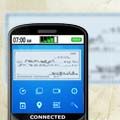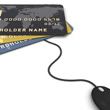Two big financial institutions have added a “mobile deposit” feature to their smartphone and iPhone applications to help consumers easily deposit checks via their mobiles. E-Trade and Chase bank have updated their mobile apps in order to cater to mobile consumers. In 2012 we can see that companies across different industries need to step up their mobile app and mobile web strategies to include more advanced features. Financial institutions have really shown themselves to be one of the leading industries in mobile marketing and mobile development. Others take heed!
E-Trade, a financial institution that offers business investors online brokerage and banking service, added the feature after seeing approximately 17% of all logins happening via mobile. The company has mobile applications for iPad, Android and BlackBerry devices and are a great example of a developer really catering strategically to the wants and needs of their consumers as well as keeping right on top of the developments in the world of mobile.
“Our strategy is to provide customers with the tools they need to manage their investments with whatever channel they choose to use,” said Eric Johnson, manager of product management at E-Trade, New York. “We are excited to offer our customers a more convenient way to manage their money with mobile deposits.”
It is certainly convenient - to make a deposit you use your mobile device’s camera to take a picture of the check you want to deposit, you can then select the account to send the check to. It is as simple as that!
In addition to the advancements to their iPhone app, E-Trade has made other additions to the company’s iPhone and Android apps. They are now equipped with complex trading options, streaming charts, CNBC videos and advanced search functions have been added to the Android app. Another example of a company that is using mobile deposits is Chase, who rolled out this function to their apps in 2010.
We reported to you before that according to The Lafferty Group, a consulting company that does banking research, by the year 2029 most banking transactions are going to be done on a mobile device. This is a very important statistic for mobile developers and publishers.
Financial institutions are already on board with advancements in mobile, but this kind of advancement in the mobile app world is not unique to mobile banking. Companies should be thinking on a larger scale about features they can add to their apps and mobile sites that will improve the user experience and put them ahead of the game. Mobile banking has become beyond the point of convenience for consumers and users now expect their banks to not only have mobile apps but have innovative features too.




